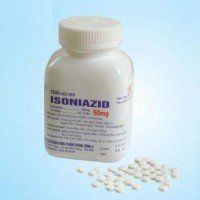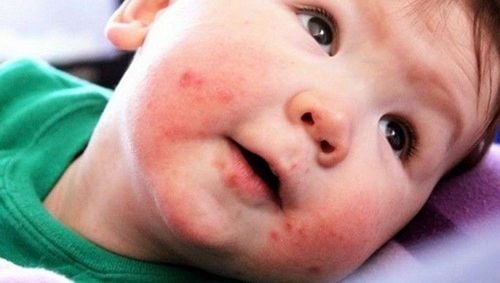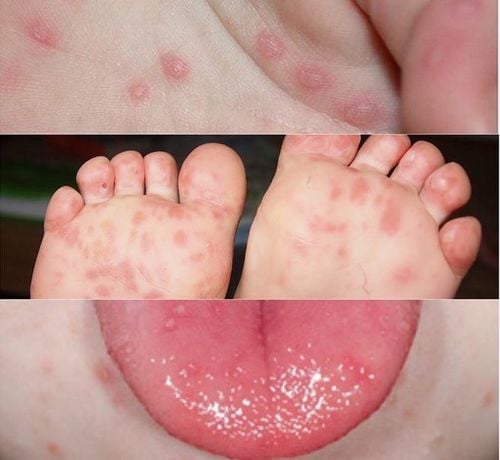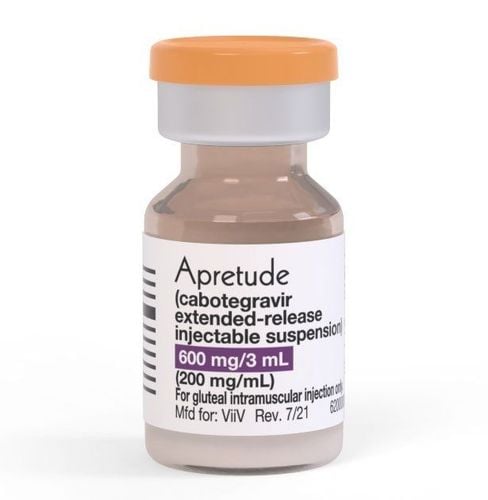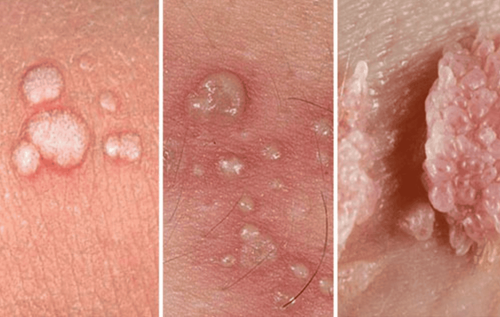This is an automatically translated article.
Hand, foot and mouth disease only occurs in children, hand, foot and mouth disease only occurs at the time of changing seasons or children who have been sick before will not get it again... are some typical misconceptions that cause hand, foot and mouth disease to spread. fast.1. Hand, foot and mouth disease
Hand, foot and mouth disease is an acute viral infection, transmitted by the gastrointestinal tract, common in young children and capable of causing large epidemics.Most cases of hand, foot and mouth disease are mild. However, in some cases, the disease can progress seriously and cause dangerous complications such as encephalitis - meningoencephalitis, myocarditis, acute pulmonary edema leading to death.
Typical signs of hand, foot and mouth disease are fever, sore throat, and lesions of the oral mucosa and skin. The blister-like nodules are often seen on the palms, soles, knees, buttocks, specifically:
Incubation period: from 3-7 days, children usually have no symptoms or just lethargy and anorexia. . Onset phase: lasts from 1-2 days with symptoms such as low-grade fever, fatigue, sore throat, anorexia, diarrhea several times a day. Full-blown stage: can last 3-10 days with typical symptoms: red sores or blisters, 2-3mm in diameter on the oral mucosa, gums, tongue, causing pain in the mouth, causing children to stop eating, stop suckling, increase salivation. Simultaneously, a blister-like rash on the palms, soles, knees, and buttocks.
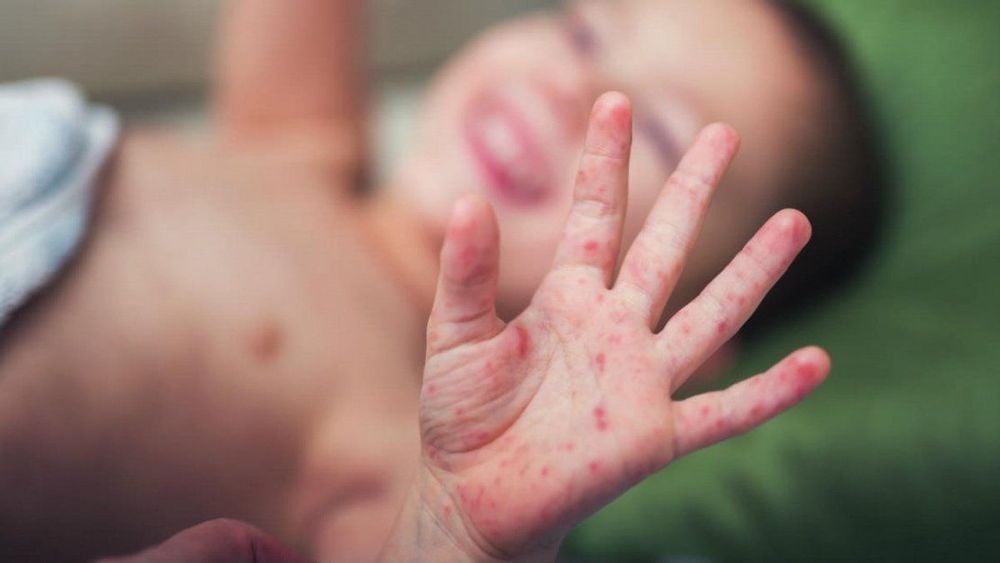
Hầu hết các trường hợp bệnh tay chân miệng đều diễn biến nhẹ
2. Common mistakes that make hand, foot and mouth disease spread quickly
Here are some misconceptions that make hand, foot and mouth disease spread more:2.1. Only children get hand, foot and mouth disease The disease occurs in all ages but is most common in children under 5 years old, mostly under 3 years old due to lack of self-hygiene awareness. However, according to statistics, there is still a certain percentage that the subjects with the disease are adults.
2.2. The disease only occurs at the time of season change Hand, foot and mouth disease occurs all year round. According to experts, hand, foot and mouth disease spreads and often breaks out strongly in the South at 2 times of the year: From April to June and from October to December, especially in densely populated places. poor sanitary conditions.
2.3. The disease is related to the dermatitis virus When infected, children often have symptoms such as red blisters in different places on the skin, so it can cause many people to confuse hand, foot and mouth disease with some other diseases. such as skin allergies, skin infections ...
In fact, the disease is not related to the virus that causes dermatitis. The disease is usually caused by Enterovirus - a group of intestinal viruses.
Therefore, when the child's condition is uncertain, the disease progresses, parents should not self-diagnose, or more dangerous, self-treat the child, this is extremely dangerous. Children should be taken to the nearest medical center to be examined as well as to find the exact cause for treatment.
2.4. The complication rate of the disease is very high Hand, foot and mouth disease can cause complications, but the danger is low. Most children will make a full recovery within 7-10 days. Therefore, do not panic when discovering that your child has hand, foot and mouth disease.
Many people, when detecting sick children, often wrap them in a tight blanket, keep them at home, not expose them to wind and sunlight, unintentionally making the disease worse. Some people are impatient to burst a water balloon, which is absolutely not advisable. Also should not be ignored when the child is sick.
2.5. Children who have had the disease will not get it again. People who have had hand, foot and mouth disease can still get it again because there are many strains of the virus that cause this disease. The most common is the Coxsackie virus strain A16, there are also Coxsackie group A (A5, A7, A9, A10) or group B Coxsackie (B2, B5 and EV-17), ..
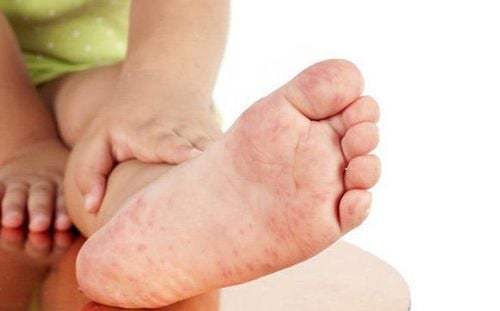
Người từng bị bệnh tay chân miệng vẫn có khả năng mắc lại
In case the child shows symptoms of hand, foot and mouth disease but is uncertain, parents should take the child to see a doctor for diagnosis as well as instructions on how to care and monitor correctly.
It is necessary to closely monitor the child's condition to detect severe symptoms such as convulsions, unsteadiness, continuous vomiting, high fever that is difficult to lower, then take the child to a medical center immediately for treatment, to avoid complications. symptoms may occur.
2.7. Hand, foot and mouth disease can cause illness Anyone can be infected with the hand, foot and mouth disease virus, but not everyone who is infected will show symptoms. Newborns and young children are susceptible to illness due to their weak immune systems.
2.8. The blisters of hand, foot and mouth disease cause pain The blisters of chickenpox are usually itchy and painful when pressed against the blistered skin, but the blisters of hand, foot and mouth disease are not itchy and are painless when pressed. When the blister dries, the skin will leave a bruise, no ulcer, never a scar.
Children who are fussy or uncomfortable when they have hand, foot and mouth disease are often caused by other symptoms such as fever, vomiting, headache, sore throat, diarrhea.
2.9. Subjective in keeping hygiene

Trẻ nhỏ hay cho tay, đồ chơi vào miệng nên nếu virus vương trên đồ chơi, thì có thể theo đường miệng vào cơ thể
Therefore, if parents do not pay much attention to keeping their children's hygiene, the risk of hand, foot and mouth disease spreading is very high.
Please dial HOTLINE for more information or register for an appointment HERE. Download MyVinmec app to make appointments faster and to manage your bookings easily.




